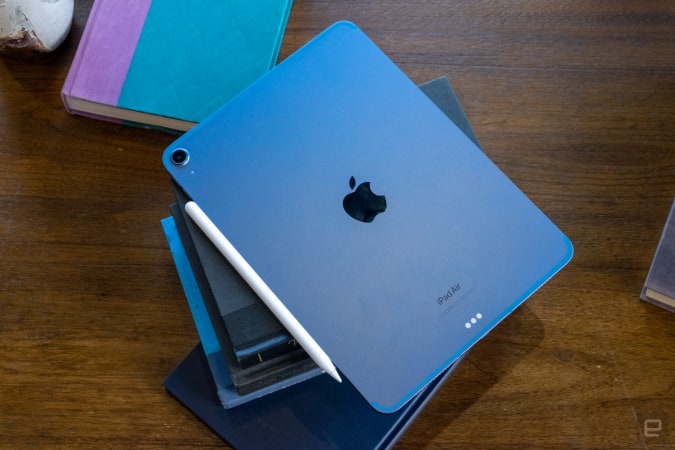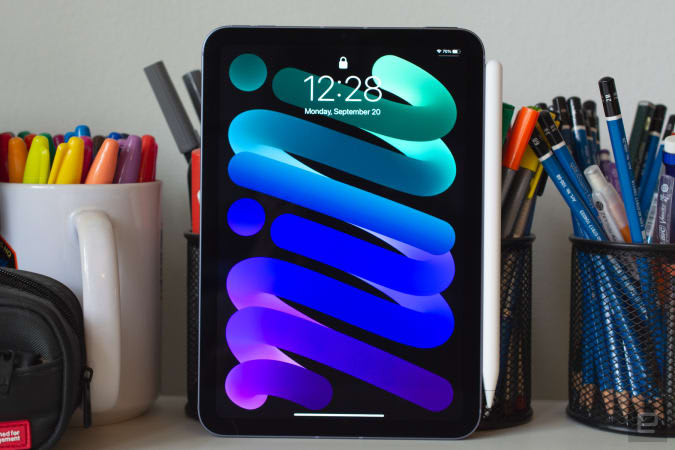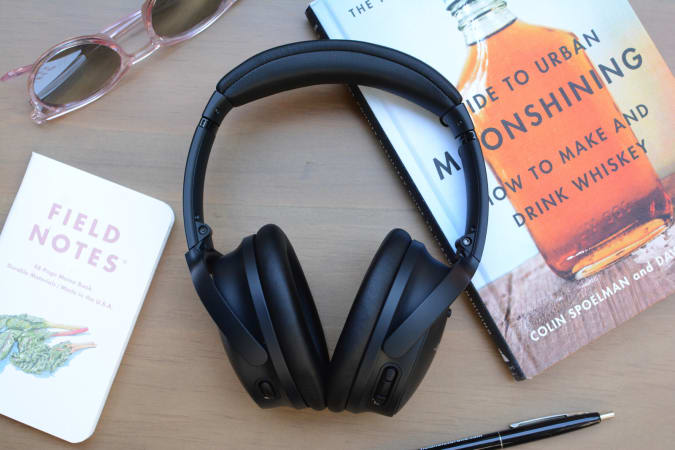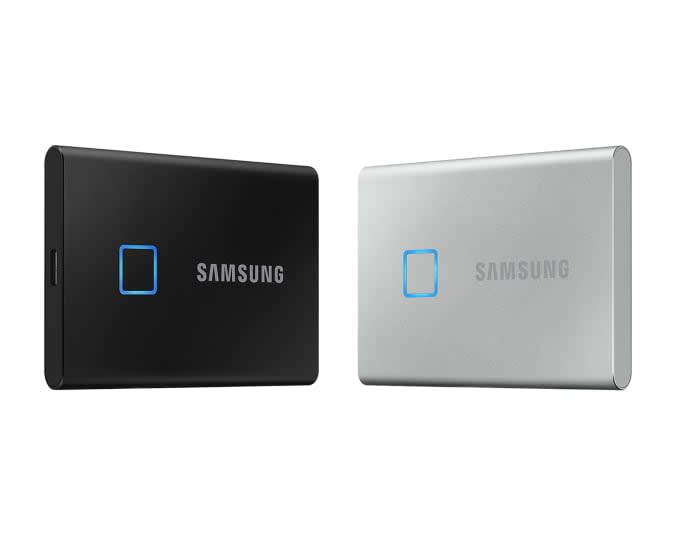Engadget 中文版以下為大家整理幾個大家在選購可攜式螢幕時,在價格、用途上要注意的元素。
消費券網購有優惠,入手 Nothing、Sony 耳機
第一期 HK$5,000 優惠券將於 4 月 7 日發放,與此同時由於臨近復活節,由即日起至 4 月 18 日,J Select 將推出節日優惠,多款產品低至 53 折發售,讓大家可以在消費券發放後提供多一個選擇,可以更愉快地購物。…
Twitter’s Android app may finally get tweet text selection
Twitter’s Android app has lagged behind its iOS counterpart for years, but at least in one way, the two clients could soon be on equal footing. In a tweet spotted by Android Police, Jane Manchun Wong, who’s known for reverse engineering apps to find ne…
Apple’s AirPods Pro are back on sale for $174
While Apple’s AirPods Pro are a few years old now, they’re still among the best wireless earbuds you can pair with an iPhone. And if you’ve been waiting to purchase a set, now is a good time to do so. Amazon has discounted the AirPods Pro to $174, down…
Apple 上線 iOS、macOS 更新修補了兩個零日漏洞
Apple 上線 iOS、macOS 更新修補了兩個零日漏洞,其中 iOS 15.4.1 還解決了一個耗電問題。
Google ‘unfairly’ blocked rival payments, India’s antitrust regulator says
The Competition Commission of India (CCI) on Friday released early findings of an investigation into Google’s app store and its payment system, Google Pay. As Bloombergreported, it found that Google’s Play Store billing system for app developers is “unfair and discriminatory”.
Back in 2020, Google decided to delay enforcing its 30% commission for app developers in India following an outcry from the country’s startup community. The tech giant agreed to defer the policy until this month. But in the interim, Indian developers lobbied the nation’s government to stop Google from enacting what they felt was an unfairly high fee. Developers also believed that since Android phones are preloaded with the Play Store, it gave Google an unfair advantage over rival payment systems.
Of particular concern in India is whether Google Pay will undercut rival United Payments Interface (or UPI) apps, which allow users to directly debit payments from their bank accounts using just a virtual address. UPI payment apps like Google Pay, PhonePe and Paytm are currently the most popular way for Indians to make payments online. Critics have alleged that Google’s control of the Play Store and the Android operating system gives it an unfair amount of control over India’s digital payment ecosystem.
India’s antitrust regulator echoed similar concerns over Google Pay. “Google’s conduct is also resulting in a denial of market access to competing UPI apps since the market for UPI enabled digital payment apps is multi-sided, and the network effects will lead to a situation where Google Pay’s competitors will be completely excluded from the market in the long run,” wrote CCI in documents viewed by Bloomberg.
India’s antitrust agency has yet to finish its investigation into Google. Upon its conclusion, the tech giant may be forced to pay fines or change its policies.
The search giant has come under fire in India, both for its developer’s fees and the potential threat Google Pay poses to domestic payment platforms. Last year Google announced that all Play Store developers would have to integrate with Google’s payment system by October 2022.
Magnetic slime ‘robot’ could help recover swallowed objects
Soft robots may soon be more flexible than ever… and a tad creepy. As The Guardianreports, researchers have developed a magnetic slime “robot” that can shift into different shapes to grab objects. It can encircle a group of pellets, for instance, and even stretch out in multiple directions to grab items on opposite sides. It’s self-healing, too. The result might induce some nightmares for the squeamish and is more than a little reminiscent of Spider-Man‘s symbiotic Venom, but it’s surprisingly effective.
A robot made of magnetic slime could be deployed inside the body to perform tasks such as retrieving objects swallowed by accident.https://t.co/EYpnx56vNOpic.twitter.com/zA3hMO80xQ
— New Scientist (@newscientist) March 31, 2022
The slime is made from the blend of polyvinyl alcohol (a polymer), borax and neodymium magnet particles. The result is a non-Newtonian fluid that behaves like a liquid or solid depending on force, and can be controlled using external magnets. There are no robotics inside the slime at present, but you can steer it like a robot— and the “ultimate goal” is to use it like one, according to researcher and co-creator Li Zhang.
There are numerous problems left to solve. On top of fitting robotics into such a soft design, the scientists also want to prevent the toxic neodymium particles from seeping out. A layer of silica in this current slime helps, but safety inside a living being might depend on limiting contact. If the technology becomes sufficiently safe and effective, though, it could help doctors recover swallowed objects and otherwise squeeze robots into places where they were previously impractical.
Apple’s new iPad Air is $30 off, plus the rest of the week’s best tech deals
While many of this week’s deals only lasted for a limited time, some of them are still available. Apple’s new iPad Air is $29 off and down to $570, while the iPad mini is $40 cheaper than usual and down to $459. Amazon’s much-improved Echo Buds are 58 percent off and down to only $50, and you can still grab 8BitDo’s Pro 2 controller for just over $40. Here are the best tech deals this week that you can still get today.
iPad Air (2022)

The latest iPad Air is $30 off right now, bringing the 64GB model down to $570 and the 256GB version down to $720. The new M1-powered iPad earned a score of 90 from us for its super-fast performance, long battery life and improved front camera.
Buy iPad Air (2022) at Amazon – $570
iPad mini

Apple’s latest iPad mini is on sale for $459, which is $40 off its normal price. We gave the small tablet a score of 89 for its lovely display, refined design and excellent battery life.
Buy iPad mini at Amazon – $459
Amazon Echo Buds (2nd gen)
Amazon’s latest Echo Buds are a whopping 58 percent off, bringing them down to only $50. These were already solid, affordable earbuds at their regular $120 price, but they’re an even better option at this price. We gave them a score of 80 for their improved sound quality, good ANC and smaller size.
Buy Echo Buds (2nd gen) at Amazon – $50
8BitDo Pro 2
8BitDo’s excellent Pro 2 controller is 15 percent off and down to $42.50. In addition to being compatible with Nintendo Switch, Windows, macOS, Android and Raspberry Pi, the Pro 2 has a familiar layout plus two back buttons, and all of its inputs are customizable using the companion apps for Windows, Mac, Android and iOS. The Pro 2 is included in a wider gaming accessories sale on Amazon, which includes other peripherals like the Razer Wolverine V2 Chroma controller for $127.50.
Buy 8BitDo Pro 2 at Amazon – $42.50Buy Razer Wolverine V2 Chroma at Amazon – $127.50Shop gaming sale at Amazon
Bose QuietComfort 45

The Bose QC45 headphones are on sale for $279, which is their all-time-low price that we saw last Black Friday. We gave the cans a score of 86 for their excellent sound quality, strong ANC and comfortable fit.
Samsung Galaxy S22
Amazon has knocked $100 off Samsung’s Galaxy S22 smartphone, bringing the handset down to $700 for the 128GB model and $750 for the 256GB version. We gave the flagship phone a score of 87 for its slick design, strong performance and excellent camera array.
Buy Galaxy S22 (128GB) at Amazon – $700Buy Galaxy S22 (256GB) at Amazon – $750
Samsung T7 Touch (1TB)

The T7 Touch portable SSD in 1TB is on sale for $140 right now. This palm-sized drive works with most devices thanks to the duo of cables it comes with, and it supports 1,050 MB/s read speeds, 1,000 MB/s write speeds, AES 256-bit encryption and Dynamic Thermal Guard.
Buy T7 Touch (1TB) at Amazon – $140
New tech deals
Xbox Stereo Headset 20th Anniversary Special Edition
You can pick up this special edition Xbox headset for $50, which is 29 percent off its normal price and a record low. This is a wired headset that has green accents and support for Windows Sonic spatial sound.
Buy Xbox Stereo Headset at Amazon – $50
PowerA Enhanced Wired Controller (Xbox)
PowerA’s Enhanced Wired Controller for Xbox is 32 percent off and down to only $26. It’s a good option if you want another controller for your console but don’t want to pay the premium attached to the first-party options. This one has a familiar, ergonomic design, dual rumble motors and mappable buttons.
Buy Enhanced Wired Controller at Amazon – $26
65-inch Samsung The Frame smart TV
Samsung’s 65-inch The Frame smart TV is $300 less than usual on Amazon right now, so you can grab it for $1,500. In addition to Quantum Dot technology and built-in Alexa, The Frame series has Art Mode, which shows artwork on the screen when you’re not watching TV.
Buy 65-inch The Frame at Amazon – $1,500
Follow @EngadgetDeals on Twitter for the latest tech deals and buying advice.
Sony shouldn’t have killed the Vita
I loved the Vita. I have vivid memories of playing Persona 4 Golden for hours in the dark on my dad’s couch in Chicago flying around the world of Gravity Rush from an airplane seat and playing Murasaki Baby before bed. The Vita felt good and it made me happy. And then, Sony killed it.
For the past seven years, I’ve been wondering why the Vita had to die. So today, we’re finally going to grieve and analyze together: What happened to the Vita, and what if it were still around today?
It’s been difficult to not think about the Vita recently. The mobile market is on fire right now, with Valve’s Steam Deck shipping out, the Playdate on its way from Panic, and of course Nintendo’s Switch and Switch Lite at the top of the charts. Not to mention, Microsoft is courting the handheld space with Cloud Gaming and Game Pass, and mobile gaming represents the largest and fastest growing segment in the industry. From consoles to PC, it seems every company is investing in handheld play. Every company except Sony.
To be clear, Sony doesn’t have to compete in the handheld market just because everyone else is doing it, but the tragedy here is they were doing it with the Vita – and as LL Cool J would say, they were doing it well. Even with an embarrassing amount of options in the handheld space, I still want a new Vita. I want one in black and another in a peach colorway; I want the entire back panel to be a touchpad with DualSense-style haptics and I want a little hole in one of the corners so I can attach charms, just like I did on the original. And, charm-hole aside, I don’t think I’m alone here.
So, why don’t we all have shiny new Vitas in our hands right now? Basically, I think Sony got scared and scattered, and not necessarily in that order.
The Vita was a commercial failure, but its numbers weren’t completely tragic and there were even bright spots in its sales history. The Vita was an evolution of Sony’s successful PlayStation Portable line, with enhanced input mechanics, an OLED touchscreen and upgraded guts, and it first hit the market at the end of 2011. This was just before the launch of the Wii U, PS4 and Xbox One, and right after Nintendo dropped the 3DS.
As another handheld device, the 3DS is a good comparison point for Vita sales, and it doesn’t end up looking good for Sony. In 2012, Nintendo sold more than 13 million 3DSes, and that same year, Sony sold about 4 million Vitas. Sony stopped reporting Vita sales figures on their own after its first year on the market, and despite a few hardware iterations, the studio stopped building new devices in 2015. Sony essentially wrapped up support for the Vita by 2019, and best estimates place total global hardware sales around 16 million units. The 3DS, meanwhile, is at more than 75 million.
That’s the surface-level analysis, but I think comparing the Vita to the Wii U actually offers more insight into Sony’s mindset at the time, while offering a clear picture of what could have been.
By the beginning of 2013, the Vita and the Wii U were on shockingly similar trajectories. They were both iterations of previous hardware, trying new things and fumbling along the way. Nintendo’s Wii U came out in late 2012 and wasn’t nearly as well-received as its predecessor, the Wii, offering players a bulky gamepad with an uncomfortable UI and crappy battery life. In its five-year lifespan, Nintendo sold about 14 million Wii U consoles – 2 million fewer than the Vita’s estimated total, even.
Here’s where Nintendo and Sony pivoted away from each other. In classic Nintendo fashion, the designers of the Wii U kept their heads down and continued building their vision of a hybrid console. The Wii U wasn’t perfect, but that didn’t mean the entire concept was trash, and Nintendo’s blind focus eventually resulted in the Switch, a console with an emphasis on mobile play. Today, it’s one of the best-selling systems in history.
But where Nintendo chose to stay the course, Sony decided to turn around and go back home. It simply killed the Vita – and I think this was the result of internal turmoil at Sony proper. There was a disconnect in the way Sony marketed the Vita to different regions, and even in the way it explained basic ideas behind the hardware itself – like with its confusing and expensive memory card plan.
Since Sony stopped divulging Vita information early on, I’m using stats compiled by a self-professed data nerd at Kresnik258Gaming for this bit: The Vita sold best in Japan, where it enjoyed a sweeping marketing campaign complete with unique hardware bundles, models and games. The North American audience didn’t get the same attention, with limited advertising, few hardware bundles and only a couple of half-hearted attempts at regional software. By the time the second-generation Vita and Vita TV came out in 2013, Sony seemed barely interested in explaining the benefits of these systems to US and Canadian players, and Redditwasfilled with complaints about the company’s lack of support.
This regional disparity happens to align with some major managerial shifts at Sony, and a larger change in its approach to players and developers. With the launch of the PS4 in 2013, Sony was on top of the world – interactive entertainment president Jack Tretton obliterated the Xbox One during an iconic E3 show, and once both consoles hit the market, the PS4 emerged as a clear winner in terms of sales numbers. Then, Tretton left Sony in 2014 and Shawn Layden took his place. By this point, the Vita was clearly an afterthought in North America. With Layden at the helm, Sony’s E3 shows took on a more business-oriented tone, and by 2016, it felt like an entirely different company on-stage. And this wasn’t just external: Sony had been saturating its systems with innovative and award-winning indie titles throughout the 2010s, but in 2016, two of the company’s pivotal indie evangelists, Adam Boyes and Nick Suttner, left, and indie developers said they felt abandoned by Sony’s system.
Honestly, it seems like Sony had too much going on internally to properly focus on the Vita, and in the chaos, it lost its sense of experimentation. Since this time, Sony has doubled down on the things it knows, like upgrading its console hardware and releasing first-party games, and it’s simply following the crowd when it comes to things like PlayStation Plus and streaming. I guess PSVR is cool, but it certainly doesn’t have the same impact as the Vita once did.
Or, as the Vita could still have. Imagine if Sony had a sequel to the Vita around today to market alongside the PS5 as a connection point for its streaming ambitions and an attractive hub for developers of all sizes. While Microsoft is busy buying up every mid-tier studio in town, a Vita would offer Sony a chance to collaborate in unique ways with smaller developers, giving the company even more exclusives, the currency of the modern market. We know that players today appreciate a sleek handheld component to their consoles, and Sony could use something to compete with Microsoft’s vast cloud capabilities and funding in R&D. It could use something that Microsoft doesn’t have. PSVR can’t fulfill this role – but Vita totally could.
At least, that’s how I feel. Let me know if I truly am alone here, or if you also want a handheld system from Sony – only rule is, you have to say whether you want the charm hole.
Windows 重新設計的手機同步 app 讓 Android 通知更醒目
微軟今天公佈了重新設計的手機同步 app,並且將名稱由原本的「Your Phone」改成了「Phone Link」。除了重新設計了介面,讓它與 Windows 11 的整體風格更一致之外,Phone Link 主要的改變是將通知擺在了極顯眼處,讓你不會有所遺漏。…
